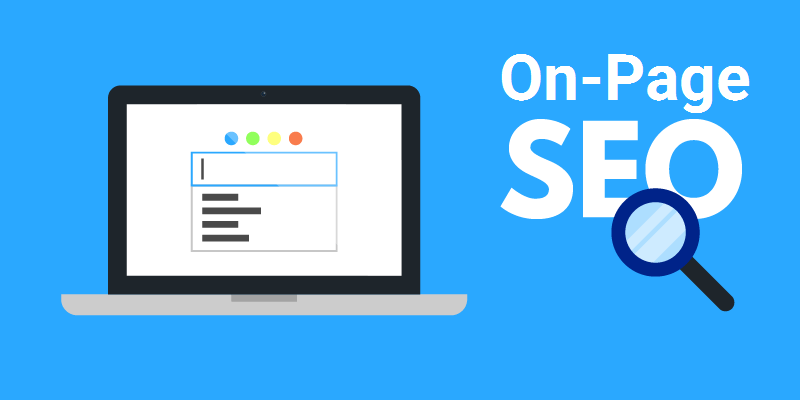- Delhi
- Last Update 04:42: am

On-Page SEO: Essential Tips for Higher Rankings
In today's digital landscape, ranking high in search engine results pages (SERPs) is crucial for attracting organic traffic and achieving online success. On-page SEO, the art of optimizing your website's content and structure for search engines, plays a vital role in this quest. By implementing effective on-page SEO strategies, you can significantly improve your website's visibility and establish yourself as a leader in your industry.
This blog post delves into the essential on-page SEO tips you need to master to climb the SERP ladder and leave your competition in the dust.
1. Keyword Research: The Foundation of On-Page SEO
Your on-page SEO journey begins with keyword research. Keywords are the search terms users type into search engines to find information. By targeting the right keywords, you ensure your content reaches the audience actively seeking what you offer.
Here's a breakdown of effective keyword research:
Understanding User Intent: Not all searches are created equal. Some users seek informational content (e.g., "best laptops for students"), while others are ready to purchase (e.g., "buy gaming laptop"). Identifying the intent behind your target keywords helps you tailor your content accordingly.
Prioritizing Long-Tail Keywords: Long-tail keywords are more specific phrases with lower competition. Targeting them allows you to attract qualified leads who are further along the buying journey.
Competitor Analysis: Analyze your competitor's keyword strategy to identify gaps and opportunities. See which keywords they rank for and explore related terms with high search volume but lower competition.
Keyword Research Tools: Leverage keyword research tools like Google Keyword Planner or SEMrush to discover valuable keywords, gather data on search volume and competition level, and stay updated on search trends.
2. Content is King: Crafting Content that Drives Results
Once you have your target keywords in mind, it's time to create high-quality content that resonates with your audience and search engines alike. Here's what you need to focus on:
Fulfilling Searcher Intent: Your content should directly address the user's search query. Provide comprehensive answers, valuable insights, and solutions to their problems.
Content Quality: Informational, interesting, and well-written information are given priority by search engines. Focus on in-depth content, user-friendly structure, and clear explanations.
Freshness: Regularly update your content with new information, data, and trends. This demonstrates expertise and keeps your audience engaged.
Readability: Strive for clear, concise writing. Use subheadings, bullet points, and images to break up text and enhance readability.
3. The Power of Titles and Tags: Optimizing Meta Elements
Strategic use of meta elements like title tags and meta descriptions can significantly impact your click-through rates (CTRs) and SEO performance.
Title Tags: Considered one of the most critical on-page SEO factors, title tags are displayed as the headline in search results. Ensure your title tags are:
Keyword-Rich: Within the first sixty characters, organically include your goal keyword.
Compelling: Craft clear, concise, and engaging titles that entice users to click.
Meta Descriptions: Meta descriptions are short summaries displayed below the title tag in search results. Optimize them by:
Keeping it Relevant: Briefly describe the content of the page and highlight its benefits to the user.
Including a Call to Action (CTA): Encourage users to click through with a clear and actionable statement.
4. Building a Strong Foundation: URL Structure and Internal Linking
Your website's URL structure and internal linking strategy play a crucial role in user experience and SEO.
URL Structure: Maintain a clear and descriptive URL structure that reflects your website's hierarchy and content. Use relevant keywords and avoid overly long or cryptic URLs.
Internal Linking: Strategically link to relevant pages within your website. This helps search engines understand your website's structure and improves user navigation, keeping them engaged for longer.
5. Leverage the Power of Images and Multimedia
Search engines are increasingly prioritizing multimedia content. Here's how to optimize images and other media for SEO:
Image Optimization: Use relevant file names and alt-text descriptions that include your target keywords. This enhances accessibility and aids in search engines comprehending the information contained in your photos.
Optimizing File Size: Ensure your images are compressed to an appropriate size without compromising quality. This improves website loading speed, a crucial SEO factor.
Conclusion
In the realm of online visibility, mastering on-page SEO is akin to laying a sturdy foundation for your digital presence. By implementing the essential tips outlined in this post, you equip yourself with the knowledge and tools necessary to ascend the ranks of search engine results and outshine your competitors. From meticulous keyword research to crafting compelling content, optimizing meta elements, refining URL structures, and embracing multimedia, each aspect contributes to a holistic SEO strategy aimed at enhancing user experience and driving organic traffic. Remember, SEO is not a one-time task but an ongoing endeavor that requires continuous refinement and adaptation to ever-evolving algorithms and user behaviors. By staying informed, diligent, and innovative, you can elevate your website's visibility, authority, and success in the competitive digital landscape.
FAQs (Frequently Asked Questions)
Q. How long does it take for on-page SEO work to pay off?
The timeline for seeing results from on-page SEO can vary based on factors such as the competitiveness of your niche, the quality of your content, and the effectiveness of your optimization strategies. Generally, you may start noticing improvements in rankings and organic traffic within a few weeks to several months of consistent implementation.
Q. Are there any free tools available for keyword research?
Yes, several free tools can aid in keyword research, including Google Keyword Planner, Google Trends, and Answer the Public. While these tools offer valuable insights, investing in paid tools like SEMrush or Ahrefs can provide more comprehensive data and advanced features for optimizing your SEO strategy.
Q. How often should I update my website's content for freshness?
The frequency of content updates depends on your industry, audience preferences, and the type of content you produce. Aim to update your content regularly, especially for topics prone to changes or new developments. Updating blog posts, articles, and product pages quarterly or semi-annually can help maintain relevance and demonstrate expertise.
Q. Can internal linking improve SEO performance?
Yes, internal linking plays a significant role in SEO by establishing website hierarchy, distributing link equity, and guiding users to relevant content. By strategically linking pages within your website, you enhance crawlability, improve user experience, and signal to search engines the importance and context of each page, thus boosting SEO performance.
Q. How important is website loading speed for SEO?
Website loading speed is critical for SEO as it directly impacts user experience and search engine rankings. Slow-loading websites frustrate users and increase bounce rates, signaling to search engines that the site may offer a poor experience. Optimizing image file sizes, reducing server response times, and employing caching techniques are some strategies to improve loading speed and enhance SEO performance.









